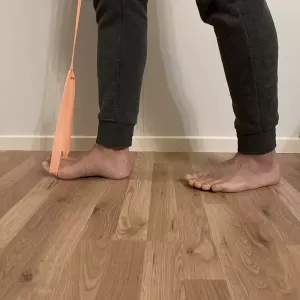Flexor Hallucis Brevis Stretch – Exercises and PNF
The flexor hallucis brevis (FHB) is a small muscle located deep in the foot, within the third layer of muscles. It is surrounded by the adductor hallucis and flexor digiti minimi muscles.
The primary function of the FHB is to assist with the flexion of the big toe, along with the flexor hallucis longus muscle.
The FHB is active during walking, particularly during the final push-off phase when the toes are used to propel the body forward.
In addition to its role in the movement, the FHB also helps to support the medial longitudinal arch of the foot.
Stretches For Flexor Hallucis Brevis
Stretching the flexor hallucis brevis (FHB) muscle will also stretch the flexor hallucis longus muscle because the two muscles are connected.
Therefore, the same stretching techniques can be used for both muscles. Here is an example of how to stretch the FHB and flexor hallucis longus muscles:
- Stand with one leg slightly in front of the other, with the front leg bent at the knee and the back leg straight.
- Loop a stretching strap around the ball of the front foot.
- Gently pull on the strap, feeling the stretch in the back of the lower leg.
- Hold the stretch for 30 seconds.
- Repeat the stretch 2-3 times on each foot.
- As you stretch, be sure to maintain good posture and keep the back leg straight.
PNF Stretching Technique for Flexor Hallucis Brevis
The contract-relax (CR) technique is a type of proprioceptive neuromuscular facilitation (PNF) stretching method that can be used to stretch the flexor hallucis brevis muscle.
To perform the CR PNF technique for the flexor hallucis brevis, follow these steps:
- Stand with one leg slightly in front of the other, and bend the front knee slightly.
- Reach down towards the ball of the front foot and hold onto it with your fingers.
- Contract the flexor hallucis brevis muscle by attempting to flex the big toe towards your body. Hold this contraction for 5-10 seconds.
- Relax the muscle and gently pull the ball of the foot towards your body, feeling the stretch in the back of the lower leg.
- Hold the stretch for 30 seconds.
- Release and repeat the process five times.
Want to learn more about flexibility and stretching? Check out these books on stretching and flexibility. Good luck!

